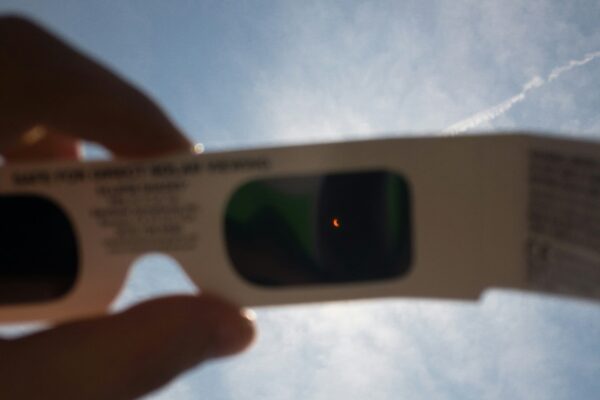On Monday, April 8, The University of Texas at Austin will celebrate the passing of a total eclipse with a special event called “Total Eclipse of the Horns.” Classes will be suspended campus-wide, and the University will provide special mylar glasses so students can witness this rare event safely. This is a historic event for the area; the last time this region witnessed a total solar eclipse was in 1397, long before Austin, Texas or America even existed.
Jill Marshall, an associate professor in STEM Education and the Department of Curriculum and Instruction in the College of Education, has observed, studied and taught how to teach celestial events for years. We asked Marshall for tips on how to teach the eclipse in a classroom environment and to share her insights on what to look out for during the event.
How have viewing and experimentation techniques evolved since cardboard boxes with pinholes?
Marshall: The cardboard box still works, although it does cause you to miss some of the subtle changes in scenery in the moments right before totality. The biggest improvement I see is the wide availability of eclipse glasses. I don’t remember anyone watching the 1979 total eclipse in Oregon having anything like the glasses that are readily available today. Certainly, no one who drove up with me did. The other innovation, of course, is the internet. Back in the day, we had to look at the sky with a telescope and figure out our latitude to determine when totality would start. Nowadays, you can just enter your city into any number of websites and it’ll calculate when totality is going to start and end for you, so that is just a real innovation in observation and safety.
Obviously, there’s a big safety component that comes with an eclipse. How can teachers ensure students are witnessing the eclipse safely and responsibly?
Marshall: The good news is that during a total eclipse, you can and should look at the sun. In an annular eclipse, like the one we had in October, you should never look directly at the sun without eyewear. But when the sun is completely blocked, the atmosphere of the sun is still visible, and it is beautiful. It’s ethereal. You’ll see colors that you just don’t see on Earth except in a lab situation. You’ll connect directly with this body in space. Missing that would be a tragedy.
In my mind, the mylar glasses may be the biggest innovation, but the most important safety feature in an eclipse is a reliable person with a reliable watch. That person will know when the totality is going to start and when it’s going to stop. As a teacher, you can do a “glasses on/glasses off” drill, even make it a contest to see who can put them on or take them off the fastest. Another teacher trick is to set up groups of students and give one student in each group a timer and have another student ensure everyone is facing away from the eclipse until it’s time to turn around. You give one person in the classroom the responsibility to tell people when their eyes are safe. You really do want to see it as soon as you possibly can.
How long of a window do you have to see an eclipse in its totality?
Marshall: It varies. Some people don’t get any totality at all. In parts of Austin, it’ll be about a minute. On campus, I think it’s a little over a minute. The longest ones I’ve known of have been less than five minutes.
What are some key things students should look out for during an eclipse?
Marshall: During the partial phase, students should look for “pinhole” images of the sun. Very often the gaps between leaves in trees or bushes will be small enough to produce images of the partially eclipsed sun—just crescents as you approach totality. These are basically what you were seeing inside the cardboard box, but you can see them with any small hole a colander for example, or a hole in a curtain.
Once totality begins and the whistle blows, take off those glasses! With good vision, or magnification binoculars with a special-purpose solar filter, you might be able to see the chromosphere – the sun’s atmosphere. You might be able to catch flares or prominences in the most beautiful, ethereal red and blue colors that you will ever see.
Look at the ground and you might see shadow bands racing across the ground and up walls. Look at the sky and you should be able to see the brighter stars if you are not in a city. Look at the horizon if you have a clear view, you might be able to see a 360-degree sunset. I have seen flocks of birds fleeing from the shadow in confusion. The sunlight – while still perfectly bright enough that you would not realize what is going on – will look odd.
You may notice that the air feels cooler with a long enough totality. Students can measure the drop with a good thermometer or record it with simple Vernier high school temperature sensors.
Be sure to listen. During the 1979 eclipse, there was an eerie silence. I remember wondering what it was that had quit making noise, then I realized the insects and birds had suddenly gone silent. Of course, if you are with 40,000 other people, you probably won’t notice silence!
Finally, if you have a few extra seconds, watch for the reactions, especially from children. During an eclipse every second is precious but the people you are with are part of the experience.



